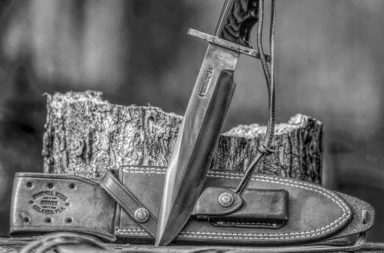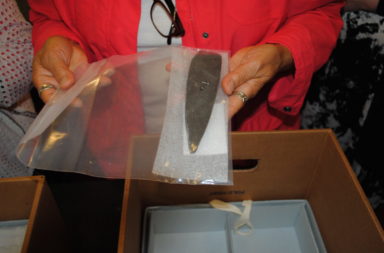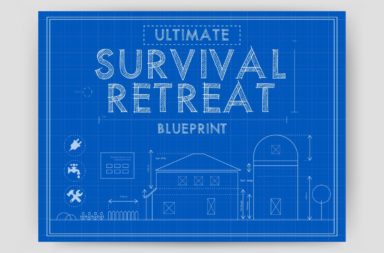Preppers and survivalists often ask “What if you could only have one knife to throw in your bug out bag?” That seemingly innocent question triggers all manner of heated conversation. After all, we all have our favorite knives, and can defend those choices.
We all approach buying a blade from different perspectives as well. Some seek some sort of ultimate combat knife, while others favor a more utilitarian approach. Other folks still seek a middle ground and look for a knife that can be a weapon and tool at the same time.

Vietnam War era survival knife. Courtesy of Wikipedia.
Throughout history knives have been weapons and tools. Until relatively modern times, blades were expensive, and time consuming to make. Many people may have only had “one knife”, and had little choice in the matter. Our prehistoric ancestors made do with various implements made from chipped stone, while medieval peasants might muster up some sort of iron blade. In each case, there was usually only just one knife a person might own and use for everything from butchering game, to personal defense.
In 2018, we are blessed with a huge array of quality knives for just about every budget. Even many inexpensive imported knives are superior to blades of just a couple hundred years ago. A prepper might find themselves carrying a quality multitool, a sturdy pocket knife, and some sort of fixed blade knife. You might even have a specialized skinning/gutting knife, and maybe one just for fishing.
The point is, thanks to the many benefits of modern day industrial capitalism, even a prepper on a tight budget is blessed with an embarrassment of riches and tools that would have been unthinkable during the time of the Founders. With that thought in mind, let’s explore the idea and possible benefits of having just one knife. In this article I’ll examine the mindset of just having one knife, and then in the second article I’ll reveal two ultimate knives that you can choose for a one survival knife concept.
There Can Be Only One
I admit that right now I don’t have anything other than a pocket knife at hand. But that is because I’m in the middle of a move, and much of my gear is in disarray, and my urban survival kit doesn’t have anything fancier than well, my pocket knife. In fact, said pocket knife is an experiment involving a cheap Chinese assisted opener left outside for over a year in the Puget Sound weather. It still works and does what I need it to do, but that is another story altogether.
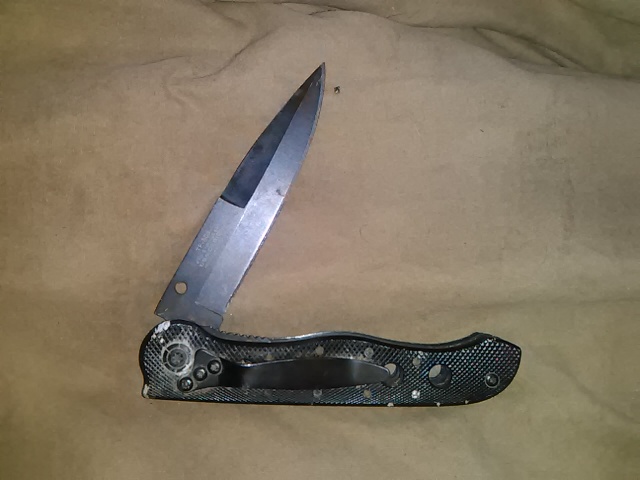
It still works! But no folder should ever be the choice for the prepper with just one knife.
Actually I lied, my replica M1860 Naval Cutlass is still floating around here somewhere, but I digress. The point is, “just one knife” often depends as much on circumstances as practicality. In my case the just one knife is the one I need for low level cutting tasks while I move, or go to the grocery store. And it isn’t even an especially good knife, but simply one that holds an edge.
So what criteria should go into choosing just one knife? Well, despite my prior anecdote, I’m going to dismiss pocket knives for the simple reason they are limited in utility after a certain point. Selecting one tool to do many jobs is all about compromising a lot of things, and a pocket knife just gives up too much.
If your one knife can’t stand up to the use an 18th century woodsman might put it to, why are you even wasting your time with it?
Design and Function Criteria
If you only have one knife, it should meet the following design and function criteria:
- Be a fixed blade.
- Have a sturdy tang- preferably a full tang, but some historically heavy duty knives do not have a full tang.
- Be made of steel thick enough to be used for some prying tasks, or to provide a spine that can be hammered on with a mallet or such for splitting wood.
- Have a history of being used as an all purpose knife by people who actually have used it as such.
- Be useful as a combat weapon.
- Can also be used for various chopping and cutting tasks.
- Be readily available as a consumer good.
- Be affordable and within reach of most any prepper.
But Why Just One Knife?
Before we dig deeper into the idea, it is probably a good idea to discuss why we should consider having just one knife. For one, you might be into minimalist kit. Our ancestors usually had just one knife, so we can certainly learn to make do.
In many cases that one knife was everything from kitchen knife to combat knife. That same knife that was called on to cut meat for breakfast may have also been used to dig the fire pit it was cooked over, and cut the wood that was used to cook it. It may have also cut branches to sleep under, butchered a deer, and could also be used for self defense.
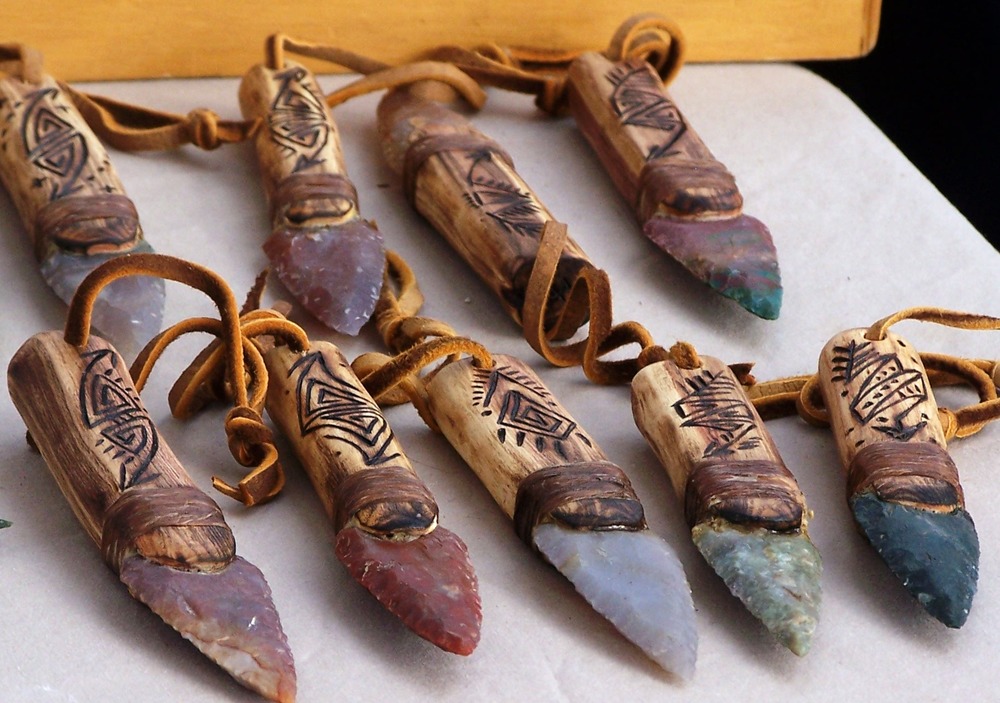
In the stone age, you had just one knife. And you liked it! Photo courtesy of National Parks Service.
Modern day knife snobs may recoil in horror at the idea of using their knife to dig, or chop small firewood with, but that’s exactly what our ancestors did at times. Which means we should expect the same out of our higher quality and better made knives today. If your one knife can’t stand up to the use an 18th century woodsman might put it to, why are you even wasting your time with it?
So why just one knife? Minimalism is one as previously mentioned. Sometimes you might only be able to afford one good knife. Or, because fixed blade knives are usually carried on the person, if you somehow lose your gear or get lost away from your camp, it may be the only knife you have.
At that point, it is pretty darn important that your one knife be pretty hardcore. And I don’t mean absurd Rambo style knives, I mean honest, working blue collar knives that can take almost whatever you can dish up.
Hollow handle survival knives are mostly gimmicks that will break on you the minute you use them.
Avoid the Cliches
I was born in 1980, and my father was overly fond of the pop survival culture of the time. That meant a steady diet of cheesy “survival knives”, overgrown machete Bowie thingies, and the odd cheap western movie inspired knife. Which is to say, I got a quick lesson in what to avoid in knives. Hollow handle survival knives are mostly gimmicks that will break on you the minute you use them. Of course there are high quality useful ones, but they stand out for their rarity and cost.
We also want to avoid overly complicated knives. Cuts to lighten the blade, overgrown serrations, and names like “Stormbringer of Death” are a great way to sell knives to people who probably shouldn’t have them. Of course gun shows and questionable gas stations are full of those things. Just don’t actually try to use them for a survival knife. Or a knife. In fact, save your money and buy something more likely to work in an emergency. Like a Lorcin pistol… you know what. How about you don’t buy junk?
Keeping with the avoiding cliché theme, we also want to avoid knives that are just too big. Some preppers go for something that looks like a machete and a bowie knife had a baby, and that baby was raised by all the bad words for poop. Resist the urge to buy a overly large knife that can’t decide on what it is.
Conclusion
By now, we’ve got some pretty solid idea of what should make up the suitable knife for somebody who wants to have only one knife. We also should have an idea of what that knife shouldn’t be. However, after eliminating junk, gimmicky blades, gun show garbage, and even high quality blades that are primarily geared for a single purpose, then what remains?
An awful lot really, and because I’m a historian, I take a long view on most things, including what forms a suitable knife for a one knife scenario. In fact, three knives rushed to mind immediately when I was handed this article. Why? Because their use in everything from common survival work to combat have been proven for centuries and each blade became cultural icons for their amazing versatility.
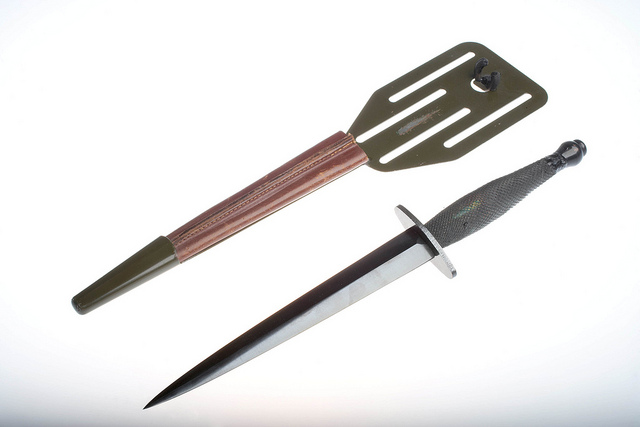
Is the classic Fairbain-Sykes Fighting Knife the ultimate knife for the prepper? Nah. But it is wicked cool. Photo courtesy of the CIA.
Now I decided against one of those three blades because they’ve fallen out of common use, but it will be introduced along with the two I didn’t discard. But they aren’t going to be in this article because of pesky things like ideal word counts, and because multiple part articles are like a good potato chip. You can’t read just one.
In the interim, I’d like you dear reader to think about the single knife you’d like to be stuck with if you could only just have one. Is it a simple, but highly effective tool? Is it crafted from high grade steel, and machined using the most modern of techniques? Is it something you made yourself with an old leaf spring, a grinder, and homemade forge? An old reliable blade you’ve carried around for years? Something else entirely?
Stay tuned, and in part two of this article, I’ll show you my two favorite (and time proven) knives to carry if you could have just one knife.
